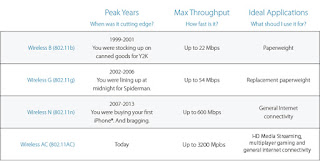 After putting in more than 250 total hours of research and testing, we recommend the $100 TP-Link Archer C7 (v2) router for most people right now. We tested it against more than 20 other routers over the past year and a half. Though this dual-band, three-stream wireless-ac router wasn’t always the fastest on every single one of our tests, it did provide great wireless performance and is offered at a super affordable price, which makes it an unbeatable value.
After putting in more than 250 total hours of research and testing, we recommend the $100 TP-Link Archer C7 (v2) router for most people right now. We tested it against more than 20 other routers over the past year and a half. Though this dual-band, three-stream wireless-ac router wasn’t always the fastest on every single one of our tests, it did provide great wireless performance and is offered at a super affordable price, which makes it an unbeatable value.The
 Archer C7 usually costs between $80 and $100. That’s the same price as many older, slower routers, but it’s faster and able to cover a larger area than some routers that cost two to three times as much. It supports the top speeds of the latest wireless standard—wireless-ac—which means that any devices you connect to it will run as fast as they can. There’s no other router that does that and is as inexpensive as the Archer C7.
Archer C7 usually costs between $80 and $100. That’s the same price as many older, slower routers, but it’s faster and able to cover a larger area than some routers that cost two to three times as much. It supports the top speeds of the latest wireless standard—wireless-ac—which means that any devices you connect to it will run as fast as they can. There’s no other router that does that and is as inexpensive as the Archer C7.You won’t find a faster router than the Archer C7 for less, and you’ll have to spend more than half again to get a better one. For most people, the Archer C7 is good enough for everything you’re going to use it for.





